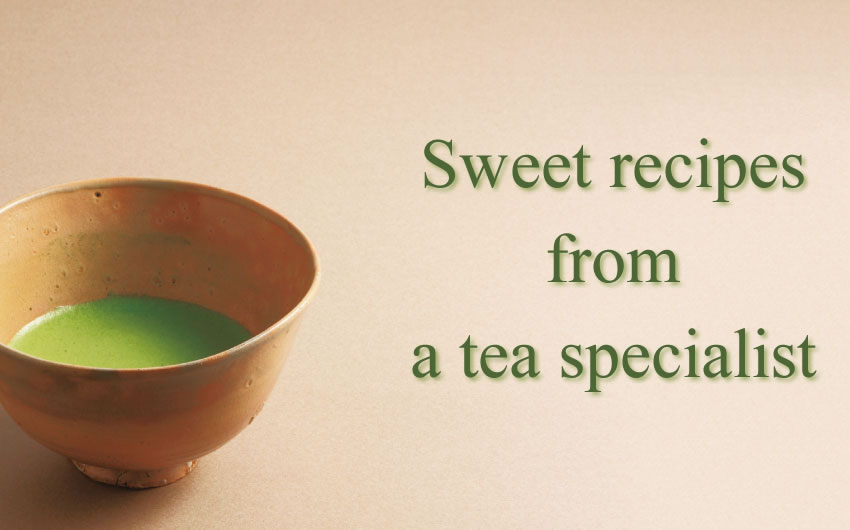What does matcha mean to you? Most people associate this bright green, bittersweet powdered tea with the tea ceremony or other formal occasions, while for some it may mean their regular morning take-out latte. Even if you're already familiar with drinking matcha, you'll discover on these pages many ways to enjoy its flavor in recipes ranging from jam to pound cake, torte to truffles. The delicious creations, rich with matcha, come from Marukyu Koyama-en, one of Japan's foremost producers of fine teas, based in Uji, Kyoto, since the late 1600s.
1 Choose matcha suitable for usucha thin tea
Matcha powder comes in various grades with differing aromas and levels of bitterness. For baking and for sweets, choose an upper-middle grade intended for usucha tea. The recipes that follow were created using Marukyu Koyama-en's Yugen (¥1,620, including tax, for 40 g), whose delicate bitterness and mellow flavor recommend it for baking. Its beautiful color makes baked goods especially attractive. In general, more expensive matcha intended for koicha tends to have sweet overtones and lacks the bite that enhances baked sweets, whereas matcha specialized for baking, or relatively inexpensive usucha-grade matcha, may taste too strong in the proportions these recipes call for; slightly reducing the quantity of matcha may yield better results.
2 Measure matcha carefully
Matcha powder is a rich, luxurious ingredient. Even small amounts impart strong flavor, and just a few grams' difference can affect the taste of the finished product. The quantities of matcha in these recipes have been worked out based on the knowledge and experience of bakers at Marukyu Koyama-en and should yield professional-tasting results at home. The amount of matcha used in a particular recipe may sometimes need fine-tuning, but when a grade of matcha equivalent to Yugen is used, the finished sweets should taste delicious.
3 Always sift matcha first
Matcha powder is made from ground tea leaves with about 90 percent of their original moisture dried away. The powder is highly susceptible to moisture and tends to become lumpy. Lumps can ruin the taste experience, so matcha should always be sifted immediately before use to ensure good results. If the matcha is to be mixed with sugar or flour, it should be sifted again after combining to ensure optimum blending. Leftover matcha should be stored airtight and refrigerated.
4 Get familiar with matcha's character
Matcha blended with heavy cream becomes a thick, sticky mixture, making the whisking process feel different from when whipping cream alone. Cake and cookie batters containing matcha tend to scorch easily, so they need to be watched carefully while baking. The recipes here take these characteristics into account. Follow the directions and you'll soon master a variety of matcha treats.
Source " KATEIGAHO INTERNATIONAL Japan EDITION Spring / Summer 2017 vol.39 "
Special thanks to Marukyu Koyama-en
Photography by Sadaho Naito
Text contributions by Sang Mi Kang and Aki Hirayama
Food preparation by Kyoko Imai, Yuki Uenoyama, and Yuko Koyama
Styling by Yuko Magata




Comments